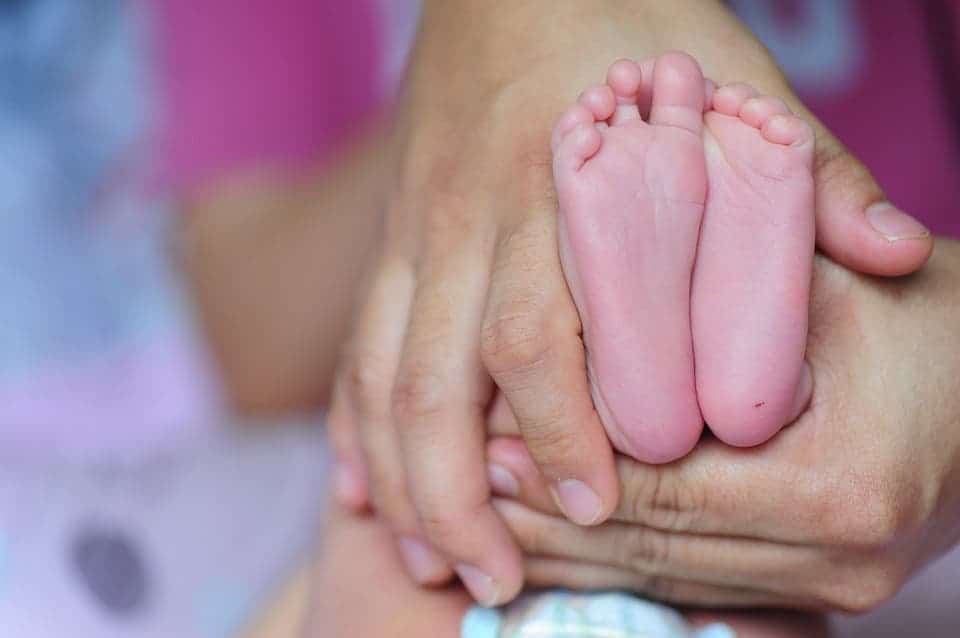Five months ago, a three-parent baby girl was born in Mexico. Debate sparked in the wake of her birth, with one side arguing we’re “playing God” while the other points out that if a procedure gives women with a particular genetic disorder a shot at having healthy children, why not use it?

Limited information about the birth has published in anticipation of the American Society of Reproductive Medicine’s scientific congress in Salt Lake City, to be held next month, where the case will be debated at length.
What we know up to now is that the baby’s parents are Jordanian and the work was performed by a US team led by Dr John Zhang, of the New Hope Fertility Clinic in New York. The mother has Leigh syndrome, a genetic disorder passed on through mitochondrial DNA. It affects a developing fetus’ nervous system, usually leading to respiratory failure within the first two or three years of life. The mother herself is healthy but has already lost two children to the disease: a girl that lived to be six years old and an eight-month-old baby.
Naturally, the event sparked a heated debate. Critics believe that it’s the same as genetically editing humans or even “playing God”, while supporters say it gives couples a chance at having healthy babies related to them that they might otherwise never have.
So let’s take a look at how it all went down.
The technique used by the New Hope team (called pronuclear transfer) involved taking the nucleus from one of the mother’s eggs — her DNA — and implanting it into a donor egg whose nucleus has previously been removed but retained healthy mitochondrial DNA. Now, what’s really important to keep in mind here is that mitochondria have a special status in the human body — kind of like a friend who keeps crashing on your couch but can cook really well so you keep him around for the quality food. They retain their own DNA, completely separate from our own. They divide when they want, independent of when our cells do it. But they’re really, really good at turning what we eat into ATP, so we allow them their unequaled sovereignty inside our cells.
That’s why many scientists in the field insist the term “three-parent baby” is inaccurate. While mitochondrial DNA is inherited solely from the maternal line, the baby’s actual genetic makeup (sans the mitochondria) only comes from two people.
Still, because the technique isn’t approved in the US, the team invoked the pretty bad-ass argument that “there are no rules” in Mexico and just flew over for the procedure.
“To save lives is the ethical thing to do,” he told New Scientist.
Professor Bert Smeets, the director of the Maastricht University Genome Centre said that the egg replacement technique has already been proven safe by previous experiments and its introduction in clinics is only a matter of time.
“A US-based research group apparently escaped the more rigid regulatory framework in the US to perform this treatment in Mexico. That is a concern, especially as the framework not only safeguards the introduction into the clinic, but also the follow-up of the children born after this treatment,” he added.
“Hopefully, now the first child is born and the heat is off, it takes away the pressure to involve patients in unsecured treatments, when good alternatives are available.”
While specialists in the field welcomed news of Dr Zhang’s work, part of the public opinion and most regulators aren’t so thrilled about it. The British Parliament, for example, voted that creating “three-parent babies” is OK in principle but haven’t yet approved any specific technique to be used. The team also took some criticism for their choice to circumvent legal issues, even if the baby seems to be healthy.
“By performing the treatment in Mexico, the team were not subject to the same stringent regulation as some other countries would insist on. We have no way of knowing how skillful or prepared they were, and this may have been a risky thing to do. On the other hand, we have what appears to be a healthy baby. Because it was successful, fewer questions will be raised but it is important that we still ask them,” said Dr Dusko Ilic of King’s College London.
“It’s unfortunate to have people decide they’re just going to quite willingly engage in this kind of reproductive tourism — to go outside of a system that is in place to create the safest, most scientifically reproducible way forward,” said Lori P. Knowles, assistant professor, adjunct, at the University of Alberta School of Public Health told the CNN.
She also pointed out that four out of the five eggs the team fertilized weren’t viable.
“It shows you the technique itself is still quite fallible,” she said.
“Which is the whole reason you’re supposed to go slowly … and not jump right into creating babies.”
The team’s findings, under the title “First live birth using human oocytes reconstituted by spindle nuclear transfer for mitochondrial DNA mutation causing Leigh syndrome”, have been published in the journal Fertility and Sterility.






